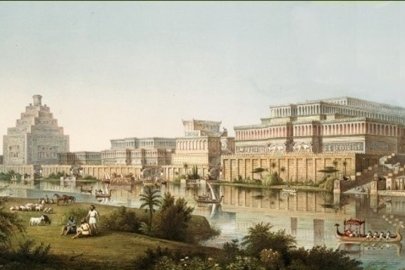Linguistics, Ecole Pratique des Hautes Etudes, France

Octobre 2015 à Juin 2016
Since his appointment in 2003 at the EPHE, Section of Historical and Philological Sciences, as director of studies "Sources and History of the Sanskrit Tradition", Prof. Jan E.M. HOUBEN researches and teaches the grammatical traditions in India, the history of scientific thought in India, and narrative and ritual in Vedic texts. After having done research on the philosophy of language of the grammarian-philosopher Bhartrhari at the University of Utrecht (Netherlands), Vancouver (Canada) and Lausanne (Switzerland), he obtained his Ph.D. Degree at Utrecht University in 1992. His thesis was published as The Sambandha-Samudde?a (chapter one relation) and Bhartrhari's Philosophy of Language (Groningen 1995). From 2011 to 2014 he was engaged in a research project on pre-modern P??inians and the function and original context of the grammar of P??ini ("P??ini and P??inians sixteenth and fifteenth centuries," Pondichery).
"P??ini, his grammar, their world"
In the development of a new global, integrative humanism, Sanskrit will obviously have an important role to play, alongside the three classical languages of medieval humanism, Latin, Greek and Hebrew, and next to other important classical languages of the world such as Arabic and Chinese. It is therefore useful to examine the nature and history of this important classical language, Sanskrit, which is one of the few ancient languages with a continuous evolution and tradition - not without transitions and significant breaks - until today. Sanskrit has, in addition, a grammar, that of P??ini (4th century BCE), which is both much more advanced, more detailed and more ancient than the old grammars available for other classical languages such as Greek (Dionysius Thrax, second century BCE), Latin (Varro, 1st century BCE; Priscianus of Caesarea, 6th century CE), Arabic (Sibawayhi, 8th century CE) and Hebrew (Ibn ?an??, 11th CE). How was the Sanskrit language, in its early socio-linguistic context, described by this grammar, and how was the "life" of the language influenced by this grammar? These are the main problematics adressed by this research project.
A paraître). « From Fuzzy-Edged “Family-Veda” to the Canonical ??khas of the Catur-Veda: Structures and Tangible Traces », Proceedings of the Fifth International Vedic Workshop, J.E.M. Houben, J. Rotaru and M. Witzel (eds.), Cambridge: Harvard University Press.
2014. « A Tradição Sânscrita entre Memética Védica e Cultura Literária », Linguagem & Ensino, Vol. 17, No. 2, pp. 441-449.
2012. Ideology and Status of Sanskrit: Contributions to the History of the Sanskrit Language [1996], New Delhi, Motilal Banarsidass, nouvelle éd.
2012. « Les perfectibles (s?dhyá) entre circularité et causalité du rituel védique », in Aux Abords de la Clairière: études indiennes et comparées en l’honneur de Charles Malamoud, D’Intino, Silvia et Caterina Guenzi (sous dir.), Turnhout: Brepols.
2012. « Studies in India’s Vedic Grammarians, 1: N?r?ya?a Bha??a’s Prakriy?-sarvasva and P??ini’s ?e », in Studies in Sanskrit Grammars: Proceedings of the 14th World Sanskrit Conference, G. Cardona, A. Aklujkar, H. Ogawa (eds.), New Delhi, D.K. Printworld.
2012. « Grammar and Other Modes of the Mind », in Sa?skrta-s?dhut?, Goodness of Sanskrit : Studies in Honour of Professor Ashok N. Aklujkar, Ch. Watanabe, M. Desmarais, Y. Honda (eds.), New Delhi, D.K. Printworld, 2012.
1997. The Emergence of Semantics in Four Linguistic Traditions: Hebrew, Sanskrit, Greek, Arabic, Amsterdam: John Benjamins Publishing Company.
